
The Tile Pro, Mate and Sticker have appeal as cross-platform Bluetooth trackers, though you do have to work out just how much tracking you want to decide if they’re right for you.
| Pros | Cons |
|---|---|
| Range of available sizes | Mate and Sticker have non-removable batteries |
| Very loud speakers on all models | Life360 app can feel super intrusive, bordering on creepy |
| Reverse phone finding is neat | Features locked behind subscription tier |
Score: 3/5
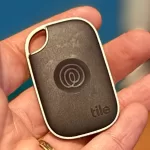 |
Buy The Tile Pro! | Buy On Amazon |
In this review
Tile Pro, Tile Mate & Tile Sticker Design
Tile Pro, Tile Mate & Tile Sticker Installation
Tile Pro, Tile Mate & Tile Sticker Performance
Tile Pro, Tile Mate & Tile Sticker Conclusion
Bluetooth trackers have come a long way over the years, and I’ve been aware of them, but rather unusually, one of the original brands in the consumer space for this kind of thing, Tile, was one that I’d never actually reviewed before.
So when Tile (or in fact, representatives of its parent company, Life360) approached me and asked me if I was keen, I most definitely was.
While competing brands – most notably Apple’s AirTags – have generated more headlines around both the good and bad sides of tracking (and, I should note, a review of the Apple AirTags was part of a submission that won me a best reviewer award back in 2022) Tile just got on with providing its cross-platform tracking technology through a variety of devices, all with the same basic approach.
While I do like what Tile does being cross-platform and covering some service areas that Apple’s AirTags (and, I believe Samsung’s Smart Tags, though I’ve not tested those) don’t, there’s also some issues around long term durability, tracking sensitivity and subscription pricing to bear in mind before deciding if Tile is the right approach for you.
Note: I’m a individual with a strong belief in personal privacy, and it’s all but impossible to film the use of Tile without giving away more personal detail than I’m comfortable with, which is why this is a text-only review with no accompanying YouTube review.
Design
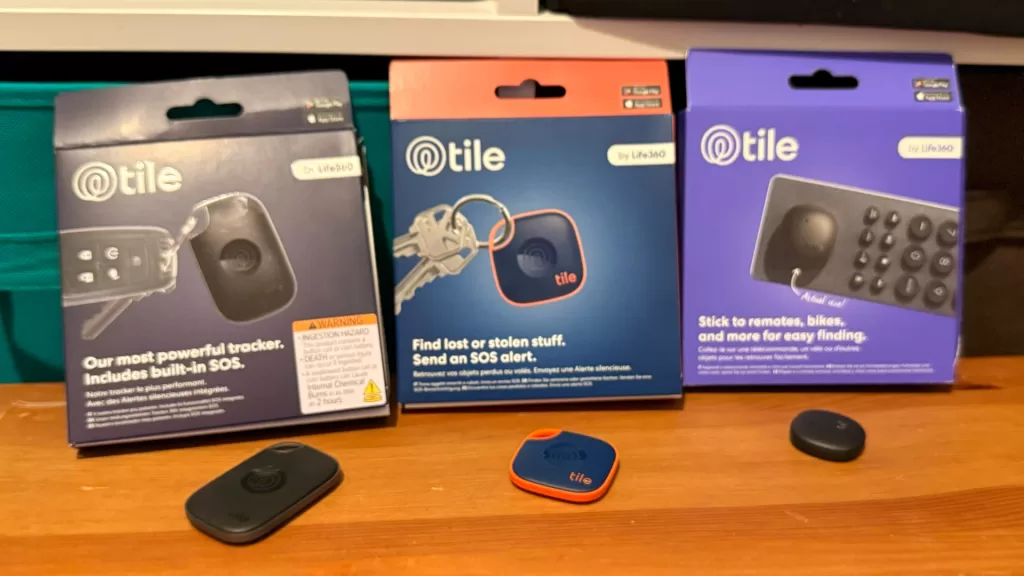
Tile sent me three different tile devices; the $39.95 Tile Sticker, the $44.95 Tile Mate and the premium play in the 2024 Tile lineup, the $59.95 Tile Pro tracker.
The Tile Sticker isn’t in fact just a sticker, but instead a very small tracker with an adhesive applied to the back of it. The idea here is that you’re going to permanently attach it to some kind of valuable item so it can be tracked and found over time.
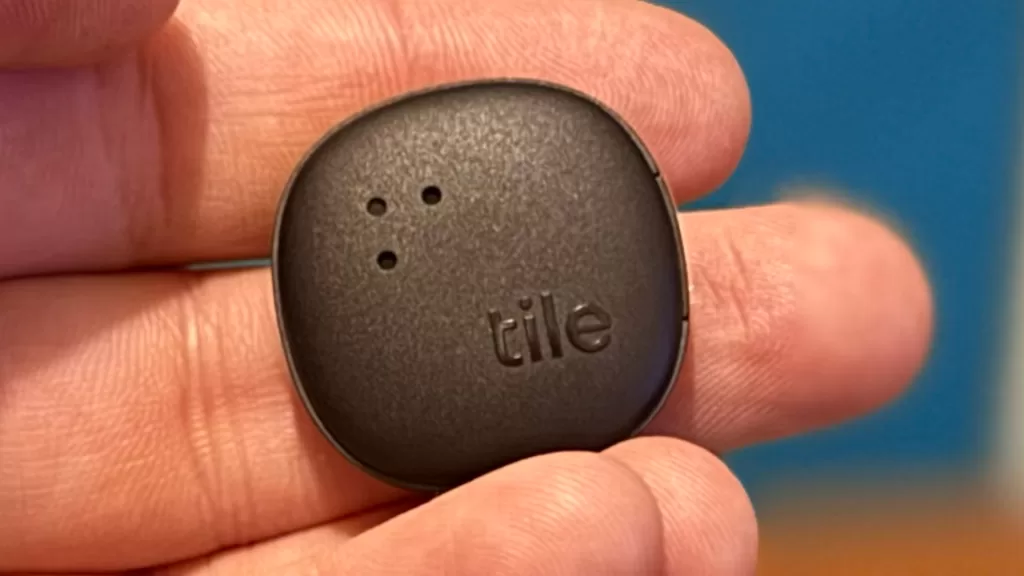
The Tile Sticker is about as small as it’s possible to get. It’s not likely you’ll lose it, though.
The adhesive is reasonably strong – which is to say that removing it from my work desk after I experimentally tested it there took some serious force – but then the idea is that this is your set-and-forget Tile tracker. There’s a small button on the side of the Tile tracker to activate key functions (more on that below), a Tile logo on the top and that’s your lot.
Moving up the range, the Tile Mate is very clearly designed to be attached to your keys, with a side loop for that kind of purpose embedded in a solid plastic square with a button on the top of the tracker.

The Tile Mate. Possibly the most Ocker of the Tile Range.
On the back of the Tile Mate is a QR code designed to make it feasible for anyone to “find” your Tile Mate even if they don’t have the Tile app, something that you don’t get with the Tile Sticker.
Like the Tile Mate, the Tile Pro has a loop for easy attachment to keys, as well as a top facing feature button and QR code on the base.
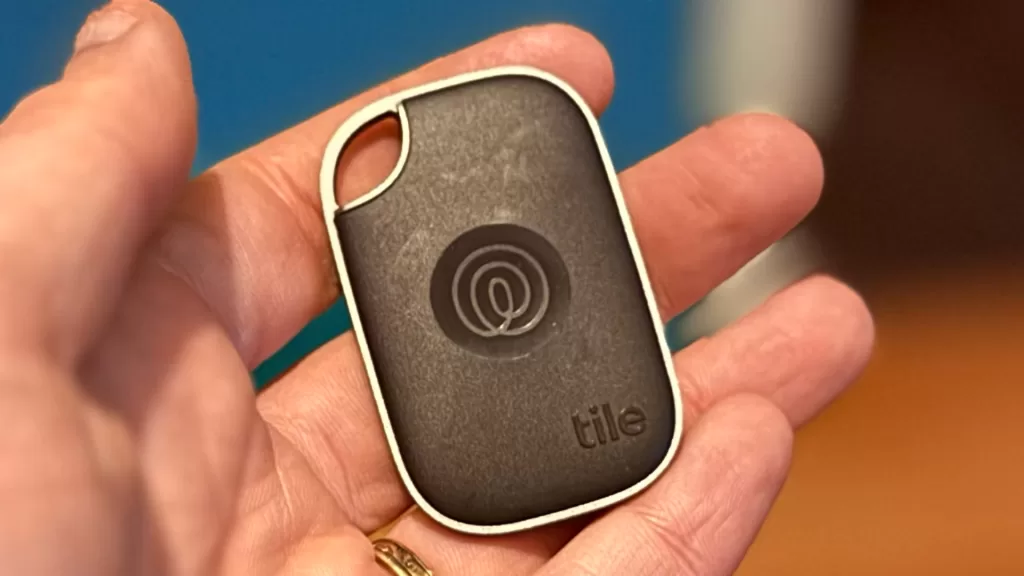
The Tile Pro is the biggest of the Tile range — and the only one with a replaceable battery.
The reason it’s the Pro model – and the one that I’d recommend generally over the Mate and the Sticker – is that it’s the only model that works with a replaceable CR2032 battery.
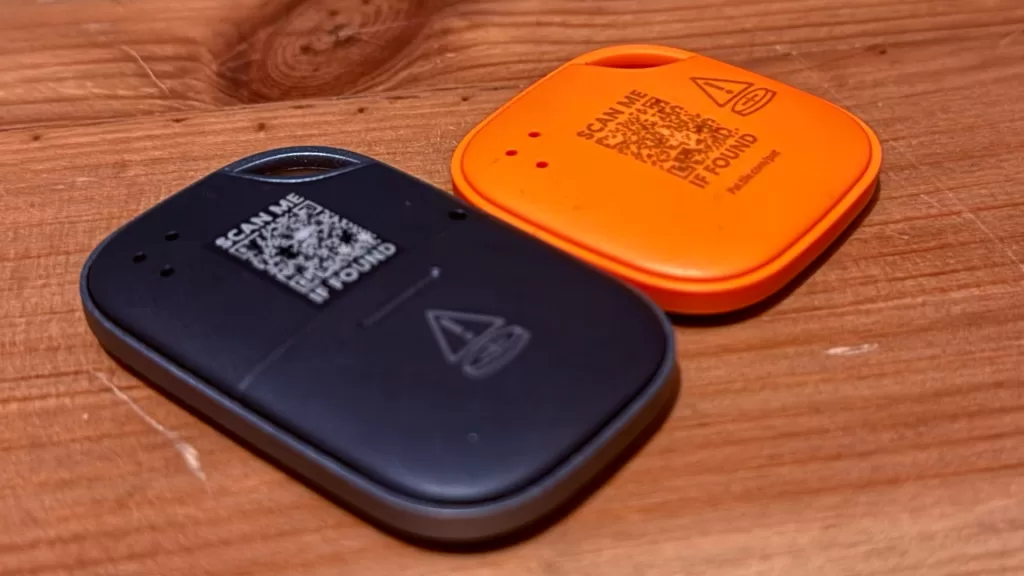
QR codes on the Tile Mate and Tile Pro mean that basically anyone can “find” them, even if they’re not using the Tile App.
The other two Tiles have embedded batteries that aren’t (officially) replaceable, with a claimed service life of around three years. After that, they’re so much digital junk – though you should always properly recycle e-waste like this rather than throwing it in the bin.
Installation
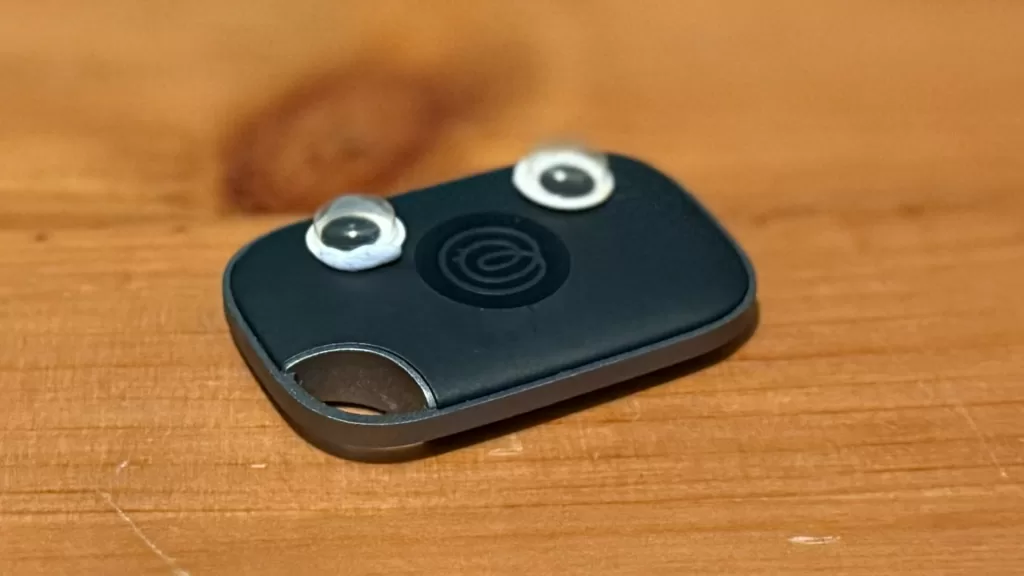
Putting Googly Eyes (totally optional) on the Tile Pro makes it look like a curious child.
The Tile Pro, Tile Mate and Tile Sticker all rely on the same pair of apps (available for either iOS or Android) for connectivity and tracking. Firstly, there’s the Tile app itself, and then optionally there’s parent company Life360’s rather more comprehensive Life360 tracking app, which has a range of other features and its own subscription tier.
Strictly speaking, you can use Tile (and a small subset of Life360) without having to pay a cent past your purchase price, though this does limit some features available to you.
There’s also a slightly confusing array of subscriptions to work out here. Firstly, Tile has two tiers – Premium and Premium Protect, costing $48.99 or $164.99 (AUD) annually, with a monthly option for Premium at $4.99 AUD only.
So what does that get you? Tile Premium offers up to 30 days of location history, smart alerts if you leave an item behind and item reimbursement up to $150 AUD if your tile-connected device is totally lost, while Premium Protect bumps that reimbursement figure up to $1,500 AUD.
If you opt for Tile Standard (AKA the free tier), you’re talking just basic finding features, finding your phone and that’s it. Walk away from your tile without a subscription, and it plain won’t care.
Then there’s Life360, which (as far as I can ascertain) only offers plans priced in US dollars.
$US14.99/month gets you Gold coverage while $US24.99 scores you Platinum coverage. With full disclosure in mind, Life360 provided me with Platinum coverage for the purposes of this review. The free tier (which is just called Free) gives you 2 days of location history on the Life360 app and unlimited alerts in 2 places, along with family driving summaries.
Gold bumps that up to 30 days of location history, as does Platinum, as well as crash detection, alerts for SOS and crash detection, roadside service – limited to two service calls per year – up to $US250 stolen phone protection for Gold (and $US500 for Platinum), while Platinum alone gets features like Credit Monitoring, Travel Support and Medical Assistance coverage.
It’s a more complex product than this rather Tile-specific review is going to cover – and to be honest I don’t want to have a medical emergency just to test it out! – but because the two products are rather closely intertwined and you’re encouraged to install both, I feel it’s worth noting what you get, what it costs… and how it can become rather confusing picking between the two.
Installation itself is relatively simple within the Tile app, with each of the Tiles detected quickly, at which point you can name them and decide what you want the feature button to do on each tile.
You’ve actually only got two choices here; either three taps will call your phone via the Tile app – a very neat reverse finding feature if you’ve got the tile with your keys on to hand but can’t recall where you left your phone – or use the SOS function in the Life360 app to alert a circle of friends if there’s an emergency.
It would be nice if there was further flexibility to perhaps have both services available — maybe two taps to find your phone and four for an SOS perhaps — but as it stands you have to choose one or the other.
Performance
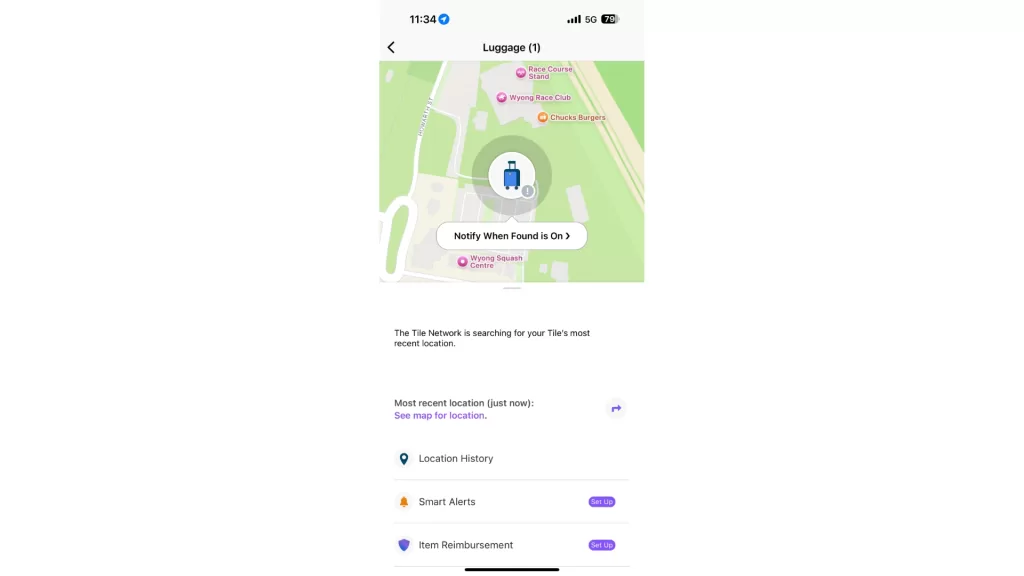
Tile’s contention is that the Tile Pro and Tile Mate are capable of tracking up to 150 metres away from the tracker – and that’s the kind of challenge that needs some serious testing. The Tile Sticker doesn’t get the same range claims, maxing out at a claimed 75 metres of coverage
The reality for any Bluetooth tracker is that it’s essentially a tiny Bluetooth radio, reliant entirely on the presence of devices (most typically smartphones) running an app that looks out for the broadcast signal from those radios for location data. Here devices like the Tile Pro/Mate/Sticker and, say, Apple’s AirTags are functionally identical.
However, the way they handle finding “lost” devices is a little different. Unlike AirTags, the Tile app gives you a broader signal strength indicator for you to play hot/cold kind of tracking games to find a Tile that’s missing, rather than the more direct location awareness of an AirTag.
On the flip side, however, when you do press the app button to indicate that a Tile is “lost”, the speakers on each of the Tile Pro, Tile Mate and Tile Sticker are quite loud.
That’s great within your own home where I could quickly and easily locate Tile trackers that I told family members to hide, though that was mostly through the fact that their speakers are reasonably loud; all the tile App will do is show you a map location and give you a signal strength setting, not any kind of directional advice.
What about when I’m out and about? Here I tried a number of different tests, “losing” my car in a carpark and trying to find it with each tile. While I could see relative signal strength improving once I was on the right floor of a carpark, there’s less positional data to play with here, and I couldn’t really hear the speakers even when I was quite close to the car, though I guess a thief probably would be able to hear it if they were zooming away in my ride.
Travelling did allow me to properly test the wider scope of the Tile network as well. Tile claims to have millions of users worldwide, but that’s realistically a drop in the bucket compared to the vast army of devices that Apple and Google can bring to bear for their own specific finding networks.
Part of the challenge here is that testing the Tiles meant running the Tile and Life360 apps on my phone, so “losing” them did mean heading much more than 75 or 150 metres away from them for a sustained period of time, because otherwise the part of the Tile network “finding” them would in fact have been me.
Testing this out at (of all places) a racecourse (it has to do with wool, you probably don’t care), I reported the Tile Pro as “lost” and waited until the Tile network “found” it, making sure I wasn’t personally close enough to be the “finding” party.
This eventually happened after about half an hour, which was pleasing given it wasn’t a particularly busy location, though later results did vary quite a lot.
In another test with the Tile Pro sitting in a car parked some 25km away from my location, it took more than three hours for it to be “found” after I’d tagged it as lost.
Put simply, while it may find your lost items, the finding (at least in Australia, or at least in the wider Sydney and Central Coast region where I’ve tested) does seem to be slower and less precise than its competitors.
For some users, that might not matter as much if you’re looking for a wider tracking and safety solution for your family, and that’s where the Life360 app comes into play.
Life360 is itself a more comprehensive tracking suite, and for some people that’s going to be a real peace of mind kind of deal, because it’ll let you know when members of your enrolled “circle” are moving around and where they are based on what the Life360 app on their phone tells them.
The flip side there is that constantly getting this kind of information (even if it was about my family members and they were 100 cognisant it was happening) also feels kind of creepy.
It also tracks travelling speed, although not all that well. Travelling at perfectly legal city road speeds with a family member, at the end of a short trip it informed me that they had finished a 10km drive with a peak speed of 67km, an impressive feat given I was driving and never went above 60km/hr for the entire trip.
I’m presuming here that the Life360 app on the phone is making its distance measurements here and that some level of slightly incomplete tracking led to the higher than real world speed claims there.
This doesn’t relate directly to the Tiles themselves, but then the way it’s handled across both apps is at the moment kind of messy and sometimes a little confusing. Tile used to be a separate company but hasn’t been since 2021, and it would arguably be a little easier if it just ran from one single app, not two.
It’s worth noting that unlike Apple and Google’s agreements that see competing trackers alert other devices as to their presence (so you’re alerted if someone slips an AirTag in your bag but you’re an Android user, for example), Tile doesn’t do this at all. Its position on this is that this kind of alert also lets thieves know that the gear they’ve just nicked is being tracked, and not alerting them is the better play.
I think I like the approach that warns people if there’s an unknown tracker nearby, but I can appreciate that perspectives can vary. More on that below.
Tile Pro, Tile Mate & Tile Sticker: Alex’s Verdict
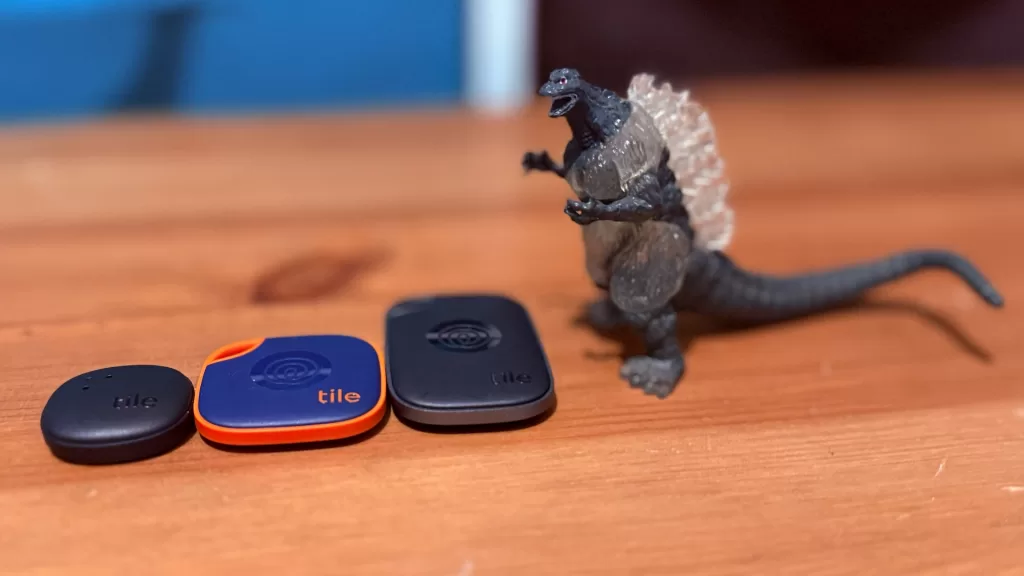
These Tiles are not huge; that Godzilla is quite small.
Tile’s approach is an interesting one, and not without merit. Unlike the approaches taken by Apple – where AirTags are iOS only – or Samsung, with its not-even-Android-wide Smart Tags, Tiles will work across both platforms, which could make them the smarter tracking choice if you’re operating across multiple platforms, or even just because you change sides in the iOS/Android war from time to time.
The embedded speakers on all three models are nice and loud, making at-home finding a cinch, and the fact that there are multiple sizes and attachment methods in play without having to buy separate holders a la the AirTags is also a big plus.
However, the Tile network is smaller than that of its competitors, and that does have an impact on the speed of finding lost devices.
That is especially a concern if you don’t want to pay Life360/Tile’s subscription pricing, because it could be a long and lonely wait if your lost Tile (or the device it’s attached to) doesn’t come within range of another Tile user.
Offering a range of subscription options to consumers is rarely a bad idea, but the way that Life360 splits it across its own app and the Tile app is easily confusing, and of course, you’ve got to structure that pricing into the total cost of ownership if you do decide to go down the subscription route.
Finally there’s that matter of your perspective on tracking, and how much of it you want. Nobody’s going to buy a tracker not to get some level of tracking of course, but the way that Tile and Life360 intertwine does make it a rather different proposition.
Honestly, I was kind of creeped out when Life360 started telling me about my family’s movements in real time, because it’s not information I want or need, and the prospect of that information falling into other hands at some later date does seriously concern me.
But that’s a personal call; I can totally respect that for some people that level of highly enhanced tracking, backed up with the use of Tile trackers could be exactly what they need for both peace of mind and in some cases actual confirmation of personal security over time.
Weighing up where you sit within that privacy space is not a one-size-fits-all affair.
Was this review useful to you? Support independent media by dropping a dollar or two in the tip jar below!
Tile Pro, Tile Mate & Tile Sticker: Pricing and availability
The Tile Sticker retails in Australia for $39.95, while the Tile Mate costs $44.95 and the Tile Pro sells for $59.95.
 |
Buy The Tile Pro! | Buy On Amazon |





